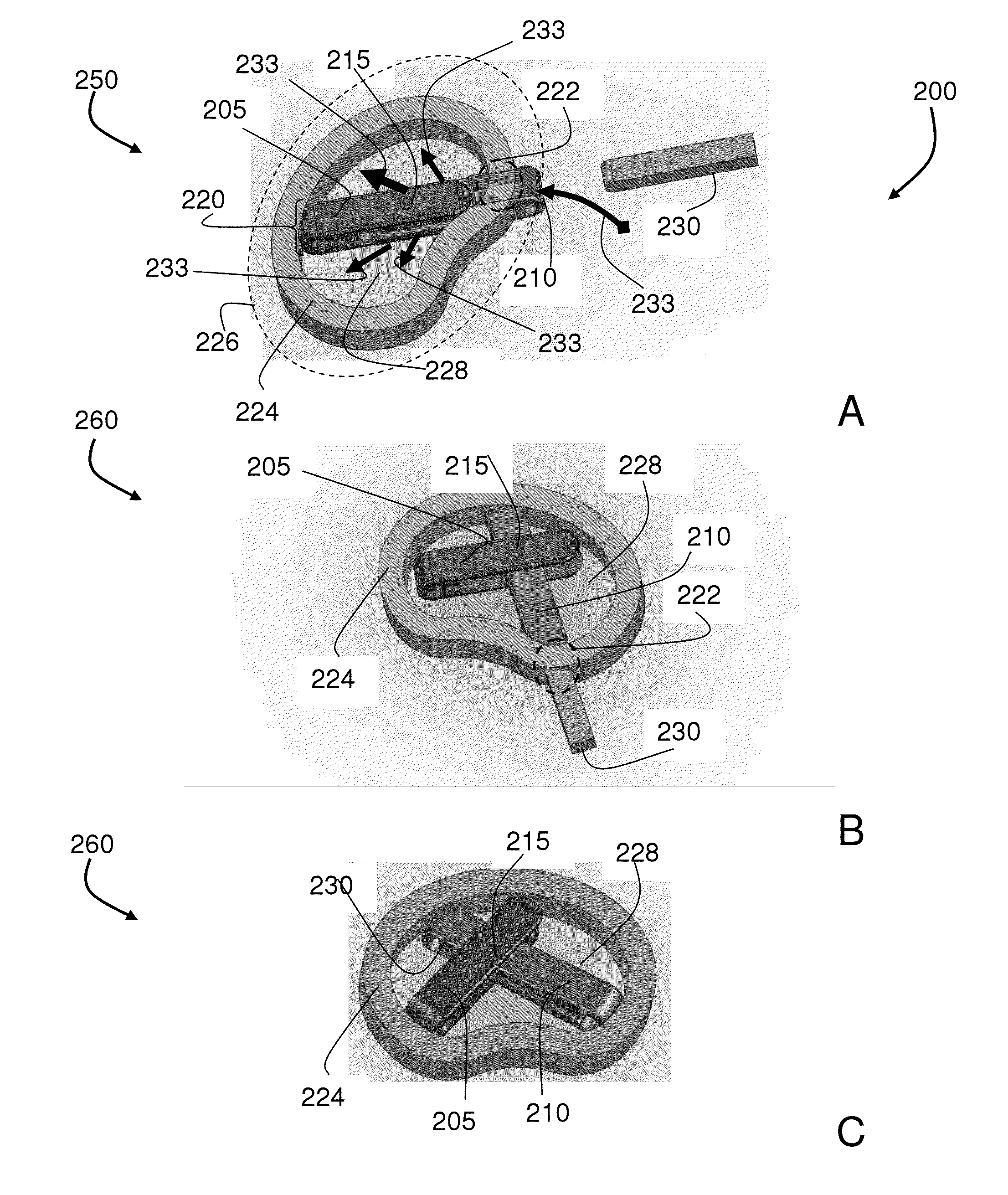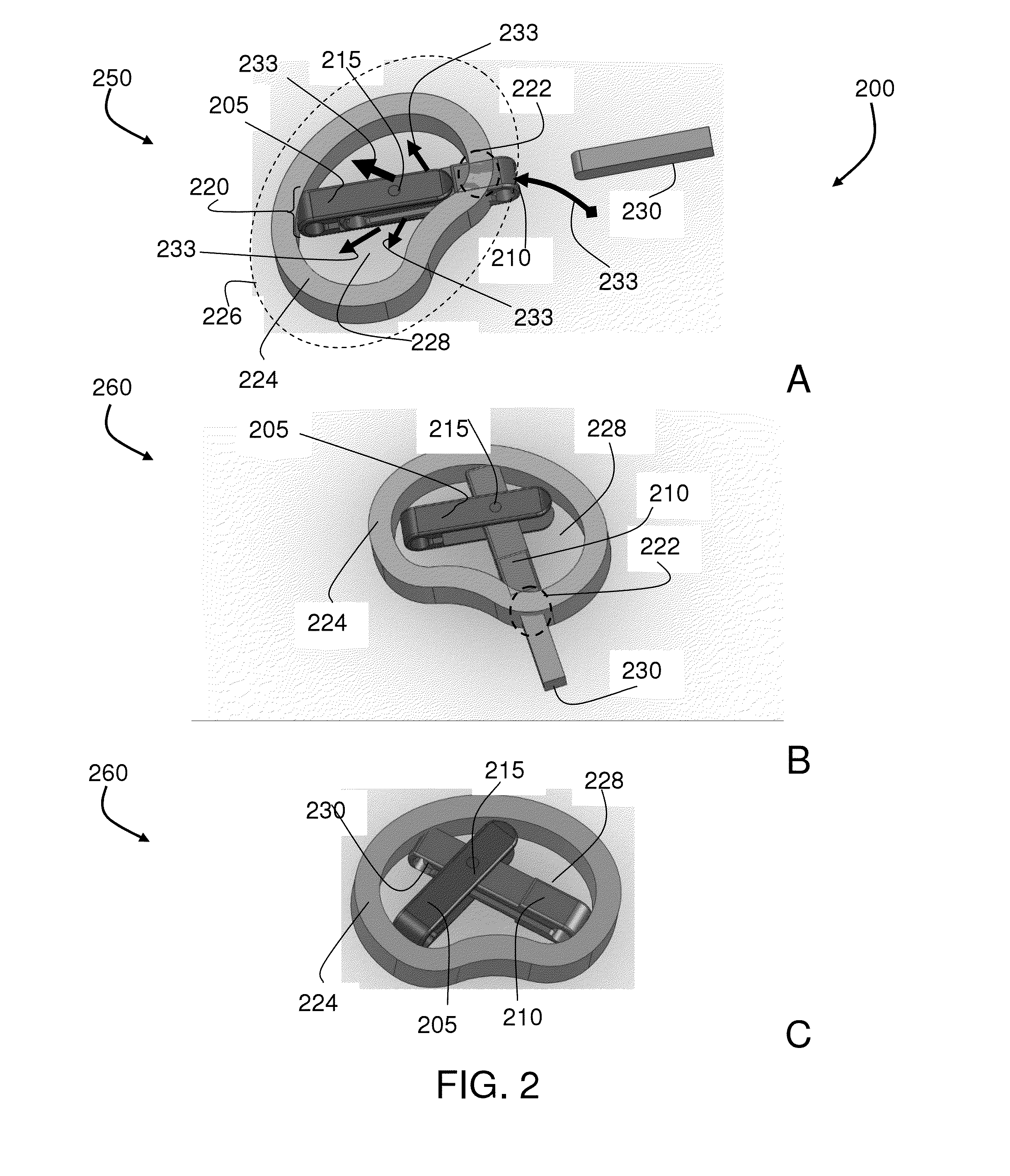A minimally-invasive, laterovertically expanding, intervertebral disc scaffolding
a scaffolding and intervertebral disc technology, applied in the field of intervertebral disc scaffoldings, can solve the problems of increasing the stress on the annulus, increasing the risk of delamination and damage on the annulus, and affecting the function of the intervertebral disc, so as to facilitate the addition of grafting material, and maximize the contact area
- Summary
- Abstract
- Description
- Claims
- Application Information
AI Technical Summary
Benefits of technology
Problems solved by technology
Method used
Image
Examples
Embodiment Construction
[0022]The teachings provided herein are generally directed to a method of fusing an intervertebral space in a subject using a laterovertically-expandable scaffolding. For example, the scaffolding can include two elongated segments connected by a hinge, such that the elongated segments can act as support members, or beams, in some embodiments, within an intervertebral disc that has had the nucleus pulposus removed.
[0023]The elongated segments can collapse into each other, much like the components of a jackknife collapse into each other, for example, in at least substantially collinear fashion. The elongated segments can rotate such that they cross, and they can connect in such a way that a component for adding a vertical force between vertebrae can be positioned within at least one of the segments. In some embodiments, one of the segments can have a slot that allows for insertion of an expansion mechanism. A shim or other graft material are examples of an expansion mechanism that can...
PUM
 Login to View More
Login to View More Abstract
Description
Claims
Application Information
 Login to View More
Login to View More - R&D
- Intellectual Property
- Life Sciences
- Materials
- Tech Scout
- Unparalleled Data Quality
- Higher Quality Content
- 60% Fewer Hallucinations
Browse by: Latest US Patents, China's latest patents, Technical Efficacy Thesaurus, Application Domain, Technology Topic, Popular Technical Reports.
© 2025 PatSnap. All rights reserved.Legal|Privacy policy|Modern Slavery Act Transparency Statement|Sitemap|About US| Contact US: help@patsnap.com



